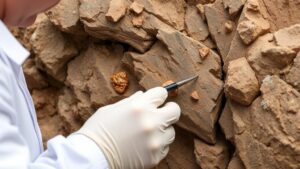The History of Dry Washing in the Placer Fields of the Pyramid Mountains
The History of Dry Washing in the Placer Fields of the Pyramid Mountains
The Pyramid Mountains, located in Idaho, were once a bustling hub during the gold rush era, particularly known for the dry washing method of gold extraction. This technique became a vital part of placer mining due to the regions environmental conditions and its accessibility. This article explores the history, development, and impact of dry washing in these placer fields, providing insight into both the techniques employed and their significance in mining history.
Understanding Dry Washing
Dry washing is a mining technique that involves the separation of gold from other materials without the use of water. This method is particularly suitable in arid regions and was crucial for miners in the Pyramid Mountains, where water was scarce. The dry washing process employs air pressure and vibration to sift through soil and gravel, allowing heavier gold particles to settle while lighter materials are expelled.
Historical Context
The Pyramid Mountains gained attention in the mid-19th century as prospectors searched for gold. After the California Gold Rush, many miners expanded their efforts to surrounding areas, including Idaho. discovery of gold in these mountains in the 1860s led to a surge in mining activities. But, miners faced the challenge of sourcing water to facilitate traditional placer mining techniques.
Dry washing emerged as a viable alternative, allowing miners to exploit the gold-rich gravels without relying on water resources, which were limited during this period. This method saw its first significant use around the 1870s, coinciding with an increased influx of miners seeking their fortunes.
Techniques and Equipment
Early dry washing employed simple hand-operated devices known as dry washers. e consisted of a series of riffles and screens to capture gold. The invention of more sophisticated equipment later revolutionized the process. Modern dry washers utilize a bellows system to create airflow, enhancing the separation of gold from lighter materials.
- Hand Crank Dry Washers: Initially, miners used hand-cranked machines that required manual effort to operate the bellows.
- Mechanical Dry Washers: Over time, more complex machines, powered by engines, emerged, allowing for greater efficiency and volume of material processed.
Significance in Mining History
Dry washing not only facilitated gold extraction in the Pyramid Mountains but also illustrated the ingenuity of miners adapting to their environment. technique enabled thousands of prospectors to continue seeking gold during periods of drought or when water supplies diminished.
Numerous mining camps began to flourish, fueled by the success of dry washing. Gold production from these mountains contributed significantly to the local economy and established Idaho as a noteworthy player in the mining industry during the late 19th century.
Legacy and Modern Relevance
Today, the legacy of dry washing in the Pyramid Mountains remains prominent. While modern mining practices have evolved significantly, the principles of dry washing continue to be implemented in similar arid regions around the world. Artisanal miners often employ basic dry washing techniques as they seek sustainable and efficient ways to extract gold.
Conclusion and Actionable Takeaways
The history of dry washing in the placer fields of the Pyramid Mountains serves as a testament to the adaptability and resourcefulness of miners in the face of environmental challenges. This technique not only played a crucial role in the economic development of the region but also laid the groundwork for subsequent methods of mining in arid landscapes.
For modern enthusiasts and historians, understanding the development and impact of dry washing can provide valuable lessons in sustainable mining practices. Those interested in gold prospecting today should consider the environmental implications of their methods, embracing the innovative spirit of past miners while ensuring responsible stewardship of natural resources.



